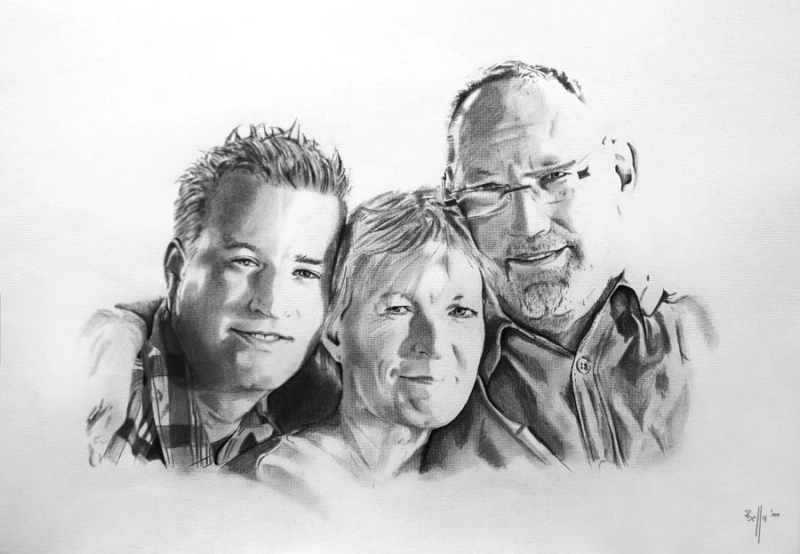The nose is crucial in relation to the overall scale of all other facial features of your pencil portrait subject. An incorrectly drawn nose will very much affect the likeness Portrait zeichnen lassen of your subject. The nose is also a study in shading and blending.
Here are some issues you should keep in mind when drawing a nose:
* Shape
When drawing a nose, you should be thinking of spheres and cylinders. The shading and blending is very much related to that of a sphere and a cylinder. Be sure you first determine the location of the light source in your photograph. This is crucial to make everything look real and natural.
* Planes
A nose has many planes and protrusions which all have a certain angle with respect to each other. It is important to judge these angles correctly to obtain a good likeness. Also, squint your eyes to determine the type of shadow you are dealing with (hard edge, halftone, soft edge, highlight, or reflected light).
* Darkest Area
Invariably, the darkest area will be found inside each nostril. These areas are always cast shadows and therefore very dark. Remember that cast shadows become lighter as they approach the light source. Also, the edges of cast shadows are the sharpest near the object that throws the cast shadow. The edges get softer as they approach the light source.
* Reflected Light
Showing reflected light is very important to model three-dimensionality. It is usually found around the edges of the nostrils. In general, any surface that has a lip or a rim will show reflected light. Reflected light is also found where you have a shadow edge. A shadow edge is an area that is receding from the light source and usually turns into a cast shadow. In between this shadow edge and the cast shadow you will find a thin layer of reflected light.
* Blending
As always, blending should proceed from the darker areas towards the lighter areas and should be done parallel to the edges of the areas and always follow the natural flow of the subject. This will promote the illusion of depth and form and therefore realism.
* Size
Although everybody's nose is different, you should memorize the average size and placement of the nose, so you can always refer to this while you are drawing an actual nose.
The nose is measured from the bridge between the eyes to the bottom of the nostrils. This distance, on average, is equal to the distance from the bottom of the chin up to the bottom of the nostrils.
The bottom of the nostrils is, again on average, at the Portrait zeichnen lassen same height of the bottom of the earlobes. The space between the eyes is one eye-width and also gives you the distance between the outside edges of the nostrils. Of course, all these measurements are with reference to a frontal view.
* Flow
Remember that the nose is part of the face. In other words, the edges should be flowing into the face and not separate the nose from the rest of the face. So the edges should blend into the surrounding cheek areas.
In conclusion, it should be said that the nose is very important to the likeness of your subject. Pay close attention to the deviations from the standard measurements and location because these are important elements in what makes a good likeness. The above guidelines together with practice will make you an expert nose drawer.


